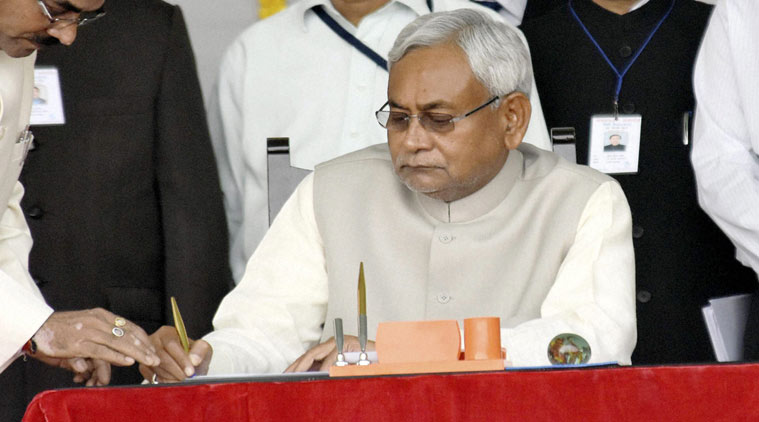Opinion His task cut out
Nitish’s ‘Bihar model’ can do with a bit of ‘Gujarat’ and ‘Punjab’, too
 Nitish Kumar signing the register after taking oath as the Chief Minister of Bihar at Gandhi Maidan in Patna on Friday. (PTI Photo)
Nitish Kumar signing the register after taking oath as the Chief Minister of Bihar at Gandhi Maidan in Patna on Friday. (PTI Photo)  Nitish Kumar signing the register after taking oath as the Chief Minister of Bihar at Gandhi Maidan in Patna on Friday. (PTI Photo)
Nitish Kumar signing the register after taking oath as the Chief Minister of Bihar at Gandhi Maidan in Patna on Friday. (PTI Photo)
In his first two stints as chief minister, Nitish Kumar’s focus was mainly on improving provisioning of public goods — be it education, law and order, primary health or roads. On these, he can claim some achievement. Since 2005, the infant mortality rate in the state has fallen from 61 to 42 per 1,000 live births. The average maternal mortality ratio has also dropped from 312 to 219 per one lakh births. Likewise, with a near doubling of schools and appointment of teachers, there has been a marked increase in literacy (especially female) alongside reduction of dropout rates. Even on physical infrastructure, there was progress — from the building of over 17,000 km of roads, significantly reducing travel time within the state, to the quadrupling of power evacuation capacity and ensuring 10-15 hours of daily electricity supply in most villages. True, there is some way to go: The quality of education and learning outcomes in Bihar’s schools continue to be poor, just as its maternal and infant mortality rates are still unacceptably high and above national average levels.
Nitish’s challenge, in his third stint, is not restricted to taking forward the gains of the “Bihar model” of development, combining social justice with improved governance and delivery of public goods. This model, no doubt, received endorsement from voters in the state in the recent assembly polls. It would be a mistake, however, to counterpose this with a “Gujarat model”, emphasising manufacturing and economic activity. In fact, Nitish needs to incorporate “Gujarat”, too, in his “Bihar model”. At one time, Bihar had a vibrant sugar sector, apart from industrial centres like Dalmianagar, Barauni, Jamshedpur, Bokaro and Dhanbad. Most of these have gone to Jharkhand following its separation from Bihar, while the ones that remain are virtually ghost towns today. Enduring social justice requires the creation of jobs, which can only come with re-industrialisation. The award of
contracts by the railways to General Electric and Alstom for setting up locomotive manufacturing factories at Marhowrah and Madhepura provides an opening, which Nitish’s government should seize.
Equally important is agriculture. Bihar has abundant fertile soil and water resources to be India’s next Punjab. That potential has been partly seen in the Seemanchal, Kosi and Mithilanchal regions, where farmers have harvested rabi corn yields comparable to those in the US Midwest heartland of Illinois, Iowa and Indiana. Bihar’s farmers can do much more if only they have three-phase power supply for running irrigation pumps, quality agricultural research and extension support, proper mandi infrastructure to market their produce, and modern food/ feed processing units that help in realising better prices. Focusing on these will bring more long-lasting gains — both for Nitish and for Bihar.





